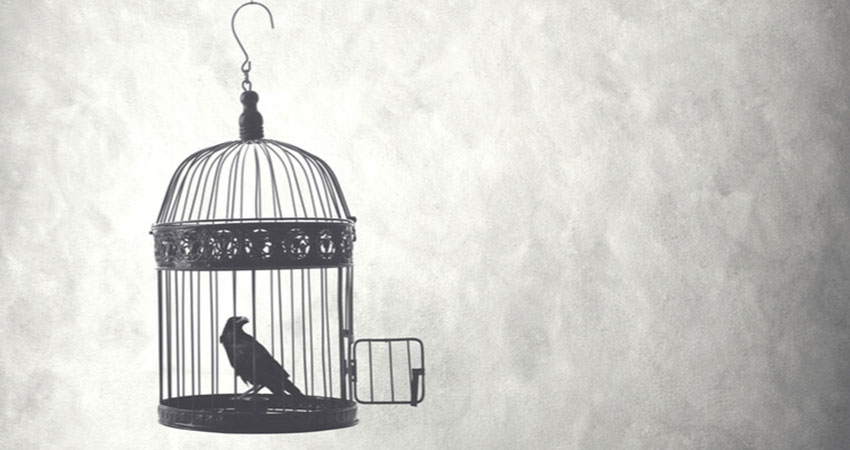Stockholm Syndrome is what happens when stressed-out captives sometimes end up copying and relating to their captors. In a similar fashion, are we seeing something like an “Amazon Stockholm Syndrome” for retailers and consumer product brands? Is Amazon, by dint of its major influence, forcing others to copy them unquestioningly? To answer that question, all we need to do is consider the many ways in which this “captor” continues to dominate.
Imagine for a moment you’re at the helm of Amazon. When it comes to shipping and fulfillment costs, you enjoy a massive advantage over the rest of the field.
You hammer home these advantages to consumers, and your marketing full-court-press is remarkably successful at making them expect free (or seemingly so) shipping and nearly instantaneous delivery.
But the domination doesn’t stop there.
Now that you enjoy such a substantial profit advantage, you’re able to drop prices and force competitors to cut their margins. While you’re at it, why not deliver a coup de grâce by going all-in on private label? Welcome to the world of Pinzon, Solimo, Lark & Ro and Amazon Essentials.
Telling Symptoms
If the Stockholm Syndrome theory were correct, you’d expect to see long-enduring captives parroting the propaganda of their captors and engaging in behavior that was not in their long-term interest.
This is exactly what we see. One brand recently gave up 16 full points of EBIDTA margin after trying to match a “freebie” offered by one of the captor-level operators. While a healthy brand’s average discount should be no higher than 26%, we routinely see brands with average discounts of 50% once you factor in shipping and return costs.
Better Questions
Going head-to-head with Amazon may be appropriate for a tiny number of true giants that can afford to run their own multibillion-dollar ecommerce platforms. But for many others, evolutions in commerce-as-a-service (CaaS) create intriguing new possibilities. In the CaaS model, specialty firms create, maintain and operate your ecommerce store for you. They may also encourage you to ask questions such as:
- Is it true that there’s only one way to please the customer? Or could you use tech and analytics to win back the respect you’ve given away by selling at a loss?
- Are some of your customers loyal enough to buy from you even without receiving free shipping? How many of them exist today? How can you grow those numbers tomorrow?
- Could you gain access to the level of R&D and intelligence enjoyed by the likes of Amazon, without the astronomical costs?
Know Your Tier
To be sure, some retailers and DTC brands can afford to keep it simple.
Let’s say a company offers cool sweatshirts with a distinctive slogan/graphics. Maybe an influencer with 60 million Instagram followers loves the product. Here, commodification isn’t a major issue. The brand is under no pressure to discount or deliver in two hours. As a result, it could do well by working with a lower-tier, no-frills software solution.
At the other end of the spectrum are multibillion-dollar retailers and brands. In this scenario, one of the blue-chip, enterprise-solution giants could be a fine fit.
The mid-tier is where a great many retailers and brands currently reside. It’s at this level where CaaS has capabilities and services that bolster competitiveness, including higher-order AI and predictive analytics.
Facing Your Fear
The best mid-tier CaaS platforms deliver superior ecommerce while increasing sales, profits and conversion rates. Using advanced algorithms, data-driven intelligent promotions and discounts and cloud-based R&D upgrades, they drive most of these efficiencies. But before the leadership team of a retailer or brand can take full advantage of these gains, they may need to face some captor-induced fears.
For example, that mid-tier CaaS provider may say something like: “OK, we’re going to take away paying for those returns and get rid of free shipping on all orders. Instead, shipping will be free on orders of more than $140, which will drive a high-enough AOV.”
At first glance that may sound like a scary proposition. What preceded this advice however was a deep dive into the data. By running intelligent algorithms and multivariate tests, the company is empowered to take a more nuanced approach. The technology has allowed it to ferret out which customers will balk at the removal of giveaways, and which ones will keep shopping and stay loyal.
That means some customers will continue to enjoy free shipping, while others will pay for it, or receive a prompt along the lines of: “This order may take up to nine days to receive. If you want to pay $3.50 for shipping, it will come to you in two days.” This is what AI-driven algorithms built on constantly updated customer data allow for.
When CaaS technology is carefully applied across an entire ecommerce store, intelligent segmentation can result in a drop in the average discount from 50% to 25%, or even as low as 4.5%-6% in some cases. Most importantly, it can also help bring you to a cash-neutral position when it comes to returns.
Smarter Math
Ecommerce stores should always be learning and optimizing. With respect to emailed promotions, for example, data and algorithms can reveal precisely which configurations of price and shipping offers yield the best results. A brand could discover, for example, that certain customers are so focused on the percentage discount off a price promotion that they seem not to notice that shipping is no longer free.
Deep dives like this are a tall order for retailers and brands that lack the resources to run their own intelligent ecommerce platform. The better mid-tier CaaS companies invest in technology, data, people and processes. This gives brands sales optimization, conversions and machine learning, along with AI-driven marketing and fulfillment.
That’s what it takes to keep pace with big retail, drive predictable profitability — and snap out of the Amazon trance.
Jan-Christopher Nugent is cofounder and CEO of Nogin

